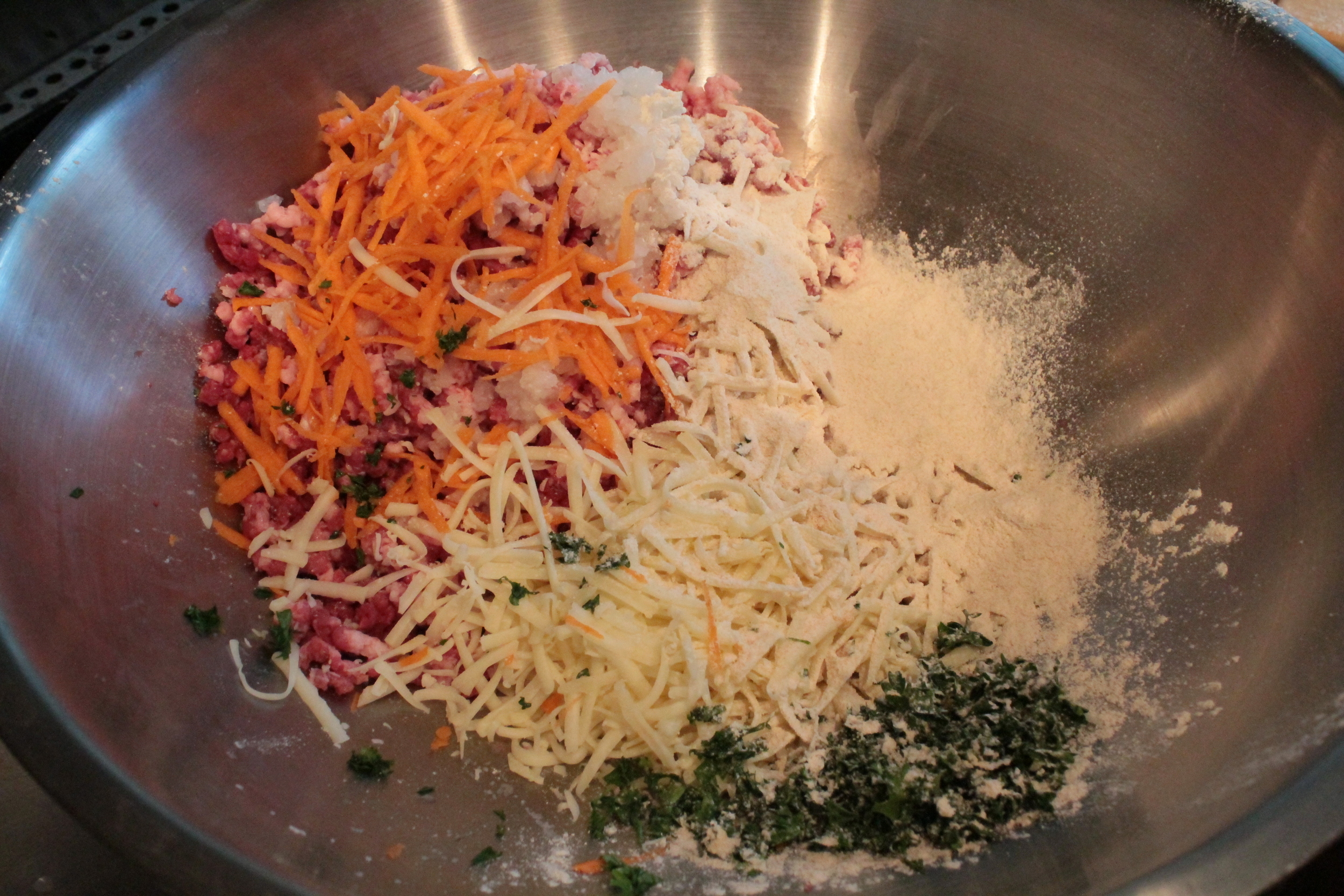I am a lover of sloppy joes but have long been a hater of bolognese. This has perplexed my counterpart for most of the 25 years he's known me. After all, they are both ground meat in a tomato-based sauce served over starch. So what's the big deal? To be honest., I'm not entirely sure. But, rather than belabor the whimsical nature of my palate, I'd like to share his favorite take on the classic Italian meat sauce - spaghetti and meatballs.
And my counterpart makes a tasty meatball. Part of it is the meat blend. He likes to use beef and lamb in his meat mix but avoids some of the other meats people like to add - like port, veal, Italian sausage. He keeps it simple to keep it tasty.
Trimming the lamb
He also grinds the meat himself, using the trusty Kitchen Aid. First he trims off the fat and any bones and sets them aside for stock. Then he runs it all through the meat grinder, ending with a small onion to ensure all the meat is pushed through.
Ready for the meat grinder
Plus he adds a lot of veg. In the meatballs themselves. Onions, carrots, leek - but no garlic. This is also key as it is a bit of a line between the beginner cook and one who has mastered the art of flavoring food. The beginner is looking to make a big splash and tends to lean toward big, bold flavors. Italian food lends itself well to this approach. With strong ingredients like garlic, olive oil, basil, etc. it's easy for a beginner to focus on these bitter, pungent flavors to create something with a robust aroma that actually Tastes Like Something. I remember eating a lot of home-made pasta dishes in college that Tasted Like Something. What they tasted like was garlic and olive oil and basil.
So, on to the more advanced technique. Veg is a wonderful ingredient to add flavor to your food. Our meatballs contained minced onion and leek, plus grated carrot. This gives the flavor of the meatballs a little depth, a little sweetness, and a little ballast to cut through the meat fat.
The mighty meatball mix
To bind the meatballs together, my counterpart prefers white whole wheat flour, and not too much, plus a couple of jumbo eggs and some grated mozzarella.
A little egg to bind it
Now, once everything is mixed, the meatballs get baked in the oven at 350. For perfectly shaped meatballs, break out the cookie scoop. This will give you perfect little ping-pong-sized meatballs that are easy to manage.
The cookie scoop makes things easy
Ready for the oven
While the meatballs are in the oven, make your sauce. A red sauce is as fraught with potential missteps as the meatballs. A good red sauce starts with a good tomato base. We scored a couple of cartons of Pomi tomato sauce at our local Wal-Mart (seriously - this stuff is imported from Italy and they had it next to the Chef Boyardee). You'll get a truer tomato flavor from something that comes out of a carton rather than a can, plus it's easier on the belly.
A good tomato sauce needs good tomato
You'll also want to remember that veg is a wonderful way to flavor food. Plus a high veg content will add a good amount of natural fructose to counter the acidity of the tomato. Carrots, celery, onions, and leek are all good here. Our fresh herbs were parsley, basil, sage, and a little oregano. Use about five times as much veg as you think you should. Seriously. It will cook down. Add some fresh herbs (a little basil and even less sage are good), bring everything to a boil and then let it simmer.
Meatballs are done
When the meatballs are done, gently add them to the sauce and let everything simmer together while the pasta cooks. We used angel hair pasta, which is a good choice for meatballs.
Meatballs in the sauce
Now here is the finishing touch - spaghetti and meatballs really done right involves cheese (of course) and the broiler. First serve up the pasta on plates that can go in the oven for a couple of minutes. Then add the red sauce and meatballs. Then, add some cheese - drop little spoonfuls of ricotta and top with grated mozzarella. Place the plates in the broiler until the cheese melts and turns a nice golden brown. And that is spaghetti and meatballs done right.
Dinner is served









